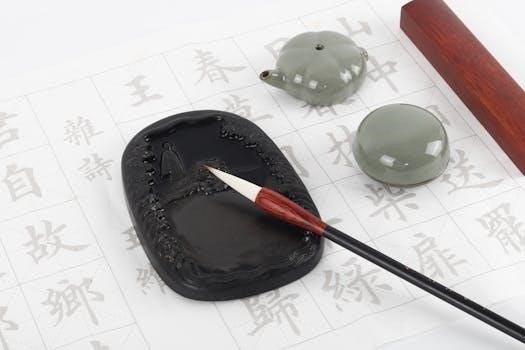Quadrilaterals, which are polygons with four sides, four vertices, and four angles, can be classified into various types based on their unique properties. Understanding these properties is crucial for geometry, as each type has distinct characteristics. We will explore these classifications in detail.
What is a Quadrilateral?
A quadrilateral is essentially a polygon defined by having four sides, four vertices, and four interior angles. It’s a closed, two-dimensional shape formed by connecting four non-collinear points with straight line segments. The term “quadrilateral” is derived from Latin roots, “quadri” meaning four and “latus” meaning side. There are different types of quadrilaterals, each with its own distinct characteristics and properties, making them a fascinating subject in geometry.
The sum of the interior angles of any quadrilateral always equals 360 degrees. This fundamental property applies regardless of the specific shape or type of the quadrilateral. These shapes can be simple or complex and can be further classified into convex and concave types. Convex quadrilaterals have all interior angles less than 180 degrees, while concave quadrilaterals have at least one angle greater than 180 degrees. The study of quadrilaterals forms a basic building block in geometry, with many other shapes being derived from or related to them.

Basic Properties of Quadrilaterals
Quadrilaterals, as four-sided polygons, possess fundamental properties. These include having four sides, four vertices, and four interior angles. The sum of those interior angles always equals 360 degrees, a key characteristic of all quadrilaterals.
Number of Sides, Angles, and Vertices
A quadrilateral, by definition, is a polygon characterized by having four straight sides. These sides form a closed shape, which is a fundamental aspect of any quadrilateral. Moreover, a quadrilateral always has four vertices, which are the points where the sides meet. These vertices are also known as corners of the shape. Consequently, due to the presence of four sides and four vertices, a quadrilateral inherently possesses four interior angles. These angles are formed by the intersection of the sides. This consistent combination of four sides, four vertices, and four angles is a defining feature of all quadrilaterals, irrespective of their specific type, whether it is a square, rectangle, rhombus, parallelogram, trapezoid, or kite. Each of these types maintains this foundational structure while exhibiting unique relationships among their sides and angles. This basic structure helps us differentiate between different geometric shapes. These are crucial for understanding the properties of all types of quadrilaterals.
Sum of Interior Angles
A fundamental property of all quadrilaterals, regardless of their specific type or shape, is that the sum of their interior angles always equals 360 degrees. This holds true for squares, rectangles, parallelograms, rhombuses, trapezoids, and kites, among others. The interior angles are the angles formed inside the quadrilateral by the intersection of its four sides. This property is a cornerstone of quadrilateral geometry, and it is crucial for understanding the relationships between different angles within a quadrilateral. Whether the angles are all equal, as in a square, or unequal, as in a kite, their sum will consistently be 360 degrees. This consistent sum of angles allows mathematicians to solve for unknown angles within quadrilaterals, given the measures of other angles. The total of 360 degrees is a universal property for all types of quadrilaterals. This is an important concept to understand the geometry of these shapes.

Types of Quadrilaterals
Quadrilaterals, which are polygons with four sides, come in various forms, including parallelograms, rectangles, rhombuses, squares, trapezoids, and kites. Each type possesses unique properties related to their sides and angles that define them.

Parallelogram
A parallelogram is a quadrilateral with two pairs of parallel sides. This fundamental property leads to other characteristics. In a parallelogram, opposite sides are not only parallel but also congruent, meaning they have equal lengths. Furthermore, opposite angles within a parallelogram are equal in measure. Another crucial property is that the diagonals of a parallelogram bisect each other; they intersect at their midpoints. However, unlike some other quadrilaterals, the angles in a parallelogram are not necessarily right angles. Therefore, a parallelogram can have various shapes, depending on the measure of its angles, as long as opposite sides remain parallel. The sides can also differ in length, but the opposite sides must be equal. This versatile quadrilateral is a building block for understanding other related shapes such as rectangles and rhombuses. Understanding these properties is very important when working with quadrilaterals.
Rectangle
A rectangle is a special type of parallelogram with an additional property⁚ all four of its angles are right angles, measuring 90 degrees each. This characteristic defines the shape of a rectangle as having straight edges and square corners. Like a parallelogram, a rectangle also has opposite sides that are parallel and congruent. However, the key difference is the presence of four right angles. The diagonals of a rectangle also bisect each other, just like in a parallelogram. However, unlike a parallelogram, the diagonals of a rectangle are also congruent; they have the same length. Rectangles are very common geometric shapes found in many objects around us due to their stable and symmetrical characteristics. Understanding the properties of a rectangle is also essential in geometry for calculations and problem-solving. Recognizing these features helps differentiate rectangles from other quadrilaterals.
Rhombus
A rhombus is a unique quadrilateral characterized by all four of its sides being equal in length. It’s a type of parallelogram, which means its opposite sides are parallel, and its opposite angles are also equal. However, unlike a rectangle, the angles of a rhombus are not necessarily right angles. This gives the rhombus a slanted appearance unless it becomes a square. The diagonals of a rhombus have special properties; they bisect each other at right angles, meaning they intersect at a 90-degree angle. Additionally, the diagonals of a rhombus bisect the interior angles of the rhombus. These properties make the rhombus a fascinating shape with practical applications in geometry. Its symmetrical nature allows for interesting geometric constructions and problem-solving scenarios. Understanding these properties helps distinguish a rhombus from other types of quadrilaterals.
Square
A square is a special type of quadrilateral that combines the properties of both a rectangle and a rhombus. It is defined by having four equal sides and four right angles (90 degrees). This means that all the sides are congruent, and all the angles are congruent as well. Because it is a rectangle, its opposite sides are parallel, and because it is a rhombus, all its sides are of the same length. The diagonals of a square are equal in length and bisect each other at a right angle. Furthermore, the diagonals of the square bisect the corners of the square creating four isosceles right triangles. Due to its unique symmetry and uniformity, the square is frequently used in geometry and construction, and is a fundamental shape in many mathematical and real-world applications. The square is a regular quadrilateral.
Trapezium/Trapezoid
A trapezium, also known as a trapezoid in some regions, is a quadrilateral with at least one pair of parallel sides. These parallel sides are called the bases of the trapezium, and the non-parallel sides are referred to as the legs. Unlike parallelograms, the legs of a trapezium do not have to be parallel or equal in length. There are specific types of trapeziums, such as the isosceles trapezium, where the non-parallel sides are equal in length, and the base angles are congruent. A right trapezium has at least one right angle. The area of a trapezium can be calculated by averaging the lengths of its bases and multiplying by the height, which is the perpendicular distance between the bases. Trapeziums are often encountered in various geometric problems and real-world applications like architecture and design.
Kite
A kite is a special type of quadrilateral characterized by having two pairs of adjacent sides that are equal in length. Unlike parallelograms, the opposite sides of a kite are not parallel. The diagonals of a kite intersect at a right angle. Furthermore, one of the diagonals bisects the other. One of the key properties of a kite is that it has one pair of opposite angles that are equal, while the other pair is not necessarily equal. Kites are not parallelograms, rhombuses, or rectangles. They are a distinct type of quadrilateral with unique properties. Understanding the properties of a kite is essential in geometry, especially when dealing with area calculations and symmetry. Kites are often encountered in various mathematical problems and have applications in design and crafts. Their unique shape makes them easily recognizable among other quadrilaterals.

Classifying Quadrilaterals Based on Properties
Classifying quadrilaterals involves examining their sides, angles, and diagonals. Parallelograms, for example, have opposite sides that are parallel and equal, while rectangles are parallelograms with all right angles. Rhombuses have all sides of equal length, and when a rhombus has all right angles, it becomes a square. Trapezoids, or trapeziums, feature at least one pair of parallel sides. Kites, on the other hand, are characterized by two pairs of adjacent equal sides and diagonals that intersect perpendicularly. The sum of all interior angles in every quadrilateral is always 360 degrees. These key properties allow for the precise classification of quadrilaterals. Understanding these properties helps in recognizing and differentiating between various types; Additionally, knowing these properties is crucial for solving geometry problems and making accurate measurements. Careful observation and application of these properties are essential for success in classifying quadrilaterals.
